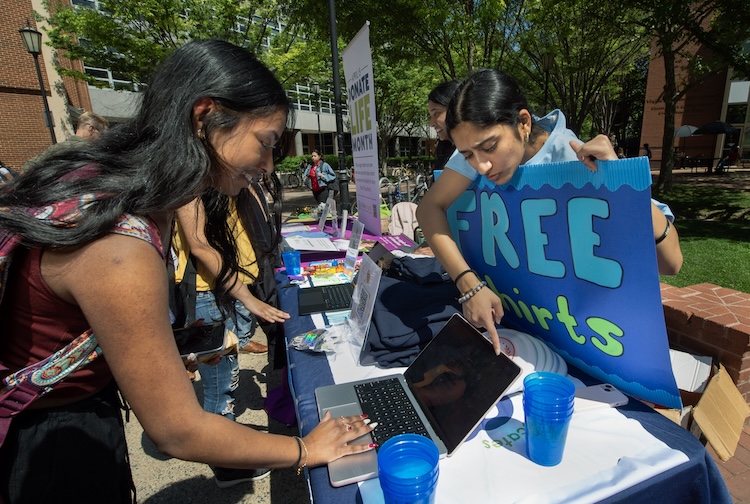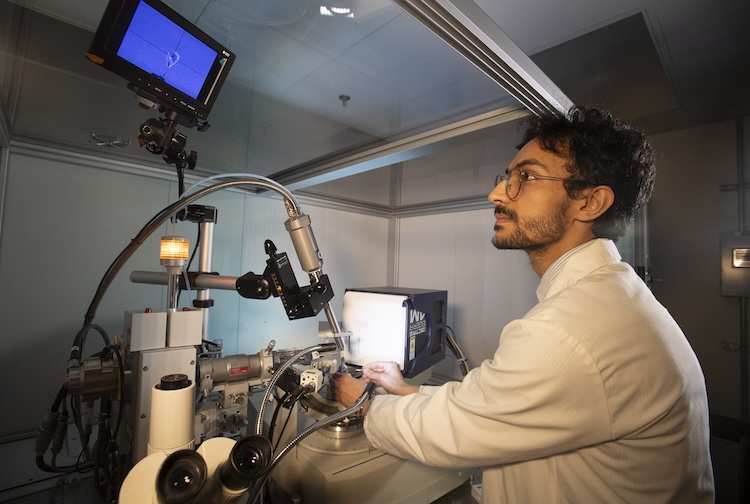
How does exercise affect the health of women and men differently?
VCU exercise physiologist Danielle Kirkman outlines differing factors and outcomes – and how our knowledge is evolving.
April 04, 2024 Exercise may benefit women’s longevity more dramatically than men’s, according to a new study published in the Journal of the American College of Cardiology. (Getty Images)
Exercise may benefit women’s longevity more dramatically than men’s, according to a new study published in the Journal of the American College of Cardiology. (Getty Images)
By Sian Wilkerson
When it comes to health, regular physical activity has a huge impact on everything from reducing disease risk to improving one’s ability to do everyday activities. Now, a new study suggests that exercise may benefit women’s longevity more dramatically than men’s.
The study, published in the Journal of the American College of Cardiology, compared death records to survey data on leisure-time activity between 1997 and 2017 from more than 400,000 U.S. adults. The study found that compared with men, women required less exercise to get similar longevity benefits.
Current physical activity guidelines are the same for men and women, though increased inclusion of women in clinical trials and the recognition of sex as a biological variable in medical research could lead to more targeted guidelines for both men and women, said Danielle Kirkman, Ph.D., an assistant professor in Virginia Commonwealth University’s Department of Kinesiology and Health Sciences in the College of Humanities and Sciences.
Kirkman is a clinical exercise physiologist whose research focuses on identifying physiological mechanisms at the center of cardiovascular and kidney diseases, as well as implementing interventions to prevent or manage cardiovascular disease in populations with impaired kidney function. Much of her research has investigated the health benefits of exercise for patients with chronic and end-stage kidney diseases.
VCU Health News spoke with Kirkman about the confluence of exercise, health and biology.
First, as a quick reminder, what are the current federal exercise guidelines?
For health benefits, the federal guidelines recommend 150 to 300 minutes of moderate intensity exercise or 75 to 150 minutes of vigorous intensity exercise per week. In addition, muscle-strengthening exercises of at least moderate intensity are recommended on two or more days per week. The most recent guidelines also encourage adults to reduce the amount of time that is spent sitting or being sedentary.
What are some key health or biological factors that influence how exercise may affect women and men differently?
A consensus statement released from the American College of Sport Medicine in 2023 outlines some primary physiological differences between men and women that influence exercise. These included muscular and anaerobic power, which is typically higher in men partially due to having a greater amount of muscle mass. Men also typically have a higher aerobic exercise capacity due to structural differences, such as having a larger heart and lungs, as well as having higher hemoglobin levels which results in greater oxygen transport and delivery to the muscles during exercise.
Interestingly, women have greater resilience to fatigue, particularly during isometric activities (e.g. a wall sit). In addition, women recover faster from exercise compared with their male counterparts.
What about hormones?
Sex hormones play a large role in how women and men respond and adapt to exercise. Estrogen (estrodial) is an important hormone – it facilitates the antioxidant benefits of exercise, carbohydrate utilization as a fuel during exercise and cardiovascular adaptations to exercise. Estrogen is also important for the prevention of ligament injuries that may occur with exercise. Testosterone is also an important sex hormone in the setting of exercise, having potent anabolic effects on muscle mass, bone mass and hemoglobin levels.
The effects of hormonal fluctuations throughout the menstrual cycle on exercise training, adaptation and performance has recently garnered a lot of attention. Although hormonal fluctuations throughout the menstrual cycle may have some physiological effects, the overall influence on exercise performance is minimal. As hormonal fluctuations throughout the menstrual cycle vary greatly between individuals, some researchers suggest that recommendations encouraging syncing exercise training with the menstrual cycle is overly complex and may pose additional barriers to women looking to participate in exercise for health benefits.
How have science and research recently advanced our understanding of exercise and biology?
The recognition of sex as a biological variable and the inclusion of women in research trials have substantially improved our understanding in sex differences and exercise; however, there is still more work to be done.
Important and interesting research in postmenopausal women has provided critical insight into the importance of estrogen for the beneficial effects of exercise. In this regard, although the recent JAAC article showed that women may reap the same health benefits with less exercise compared with men, research has shown that as women transition into menopause and lose the protective effects of estrogen, the health benefits of exercise may be dampened. Furthermore, clinically low testosterone levels that may accompany aging in men may also blunt exercise adaptations.
Research over the last decade has shown that lifelong exercise appears to be more cardioprotective in older men compared with postmenopausal women. As the population over 60 years of age continues to grow, research in the field is aimed at identifying targeted strategies to support the health adaptations to exercise in older men and women.
What exercise principles would you emphasize to help us understand exercise and the human body?
I’ll mention three:
- Lifelong exercise plays a vital role in healthy aging and is key to improving the health span as the population lives longer.
- With the high prevalence of chronic illnesses in the U.S. such as diabetes, cancer and heart, kidney, liver and lung disease, exercise is now more important than ever for the prevention and management of these detrimental conditions.
- Being physically active has an array of mental health benefits. This may be particularly relevant for college-age individuals who have experienced an increase in mental health disorders in the wake of the COVID-19 pandemic.
Importantly, you can reap the health benefits of exercise with even small doses of exercise. Health benefits have recently been reported with daily step counts of 4,000 to 8,000 (less than the 10,000 that we originally thought). If the current physical activity guidelines seem intimidating or out of reach to you, do what you can. Keep moving – something is better than nothing.



